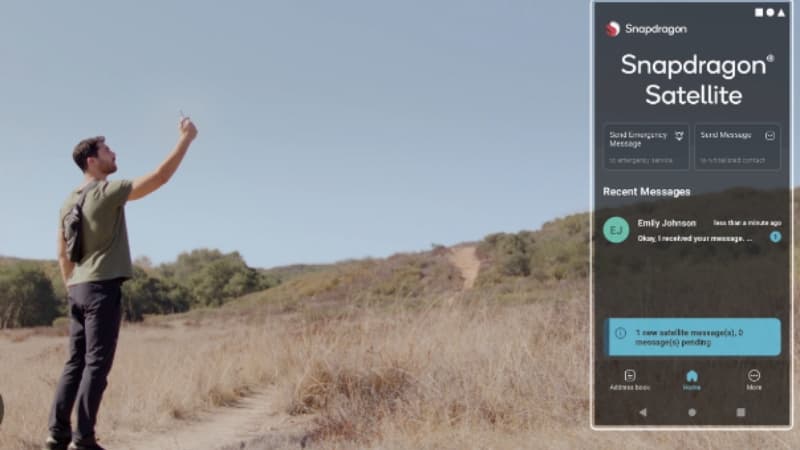Qualcomm’s Satellite Texting Plan Fizzles Out

In a setback for Qualcomm, its ambitious project, Snapdragon Satellite, aimed at enabling Android users to send texts via satellite in areas with no cellular service, has hit a roadblock. The initiative, announced in January, sought to rival Apple’s emergency SOS feature introduced in the iPhone 14 lineup. However, despite successful development and technology demonstrations with satellite phone maker Iridium, Qualcomm faces disappointment as smartphone manufacturers show little interest in incorporating the technology into their devices.
Parting Ways with Iridium
Qualcomm is terminating its partnership with Iridium, signaling the end of Snapdragon Satellite. While the collaboration achieved successful technological milestones, the lack of integration into smartphones has prompted this decision. Iridium acknowledged that despite technological prowess, smartphone makers have not embraced the satellite texting feature, creating a roadblock for Qualcomm’s aspirations.
Smartphone Makers Seek Open Solutions
Smartphone manufacturers, as communicated by Qualcomm, have expressed a preference for “standards-based solutions” in satellite connectivity. This signals a desire for a more open approach, diminishing Qualcomm’s intermediary role. CNBC reports that this inclination toward open solutions is a major factor influencing manufacturers’ decisions. The potential costs associated with implementing satellite texting could also be a deterrent for smartphone companies, with Apple taking on the expenses for its emergency SOS feature.
Iridium’s Path Forward
As Qualcomm withdraws from the scene, Iridium now has the freedom to collaborate directly with smartphone manufacturers, mobile operating system developers, and other chipmakers. This shift in strategy positions Iridium to explore new avenues and potentially find a more receptive audience among OEMs and technology developers. It remains to be seen whether this change will lead to a broader adoption of satellite texting technology in the mobile industry.
Competitive Landscape and Future Prospects
While Qualcomm faces setbacks, Apple continues to enhance its emergency SOS feature by integrating crash detection in the iPhone 15. On another front, SpaceX’s Starlink is gearing up to launch its satellite SMS service in the coming year. With plans to extend its offerings to include satellite-powered voice and data functions directly to phones, Starlink aims to eliminate the need for a nearby Starlink terminal, presenting an alternative solution in the evolving landscape of satellite communication. The competition and diversification in satellite-based services suggest that despite Qualcomm’s challenges, the industry is actively exploring innovative ways to bring connectivity to users in remote or challenging environments.